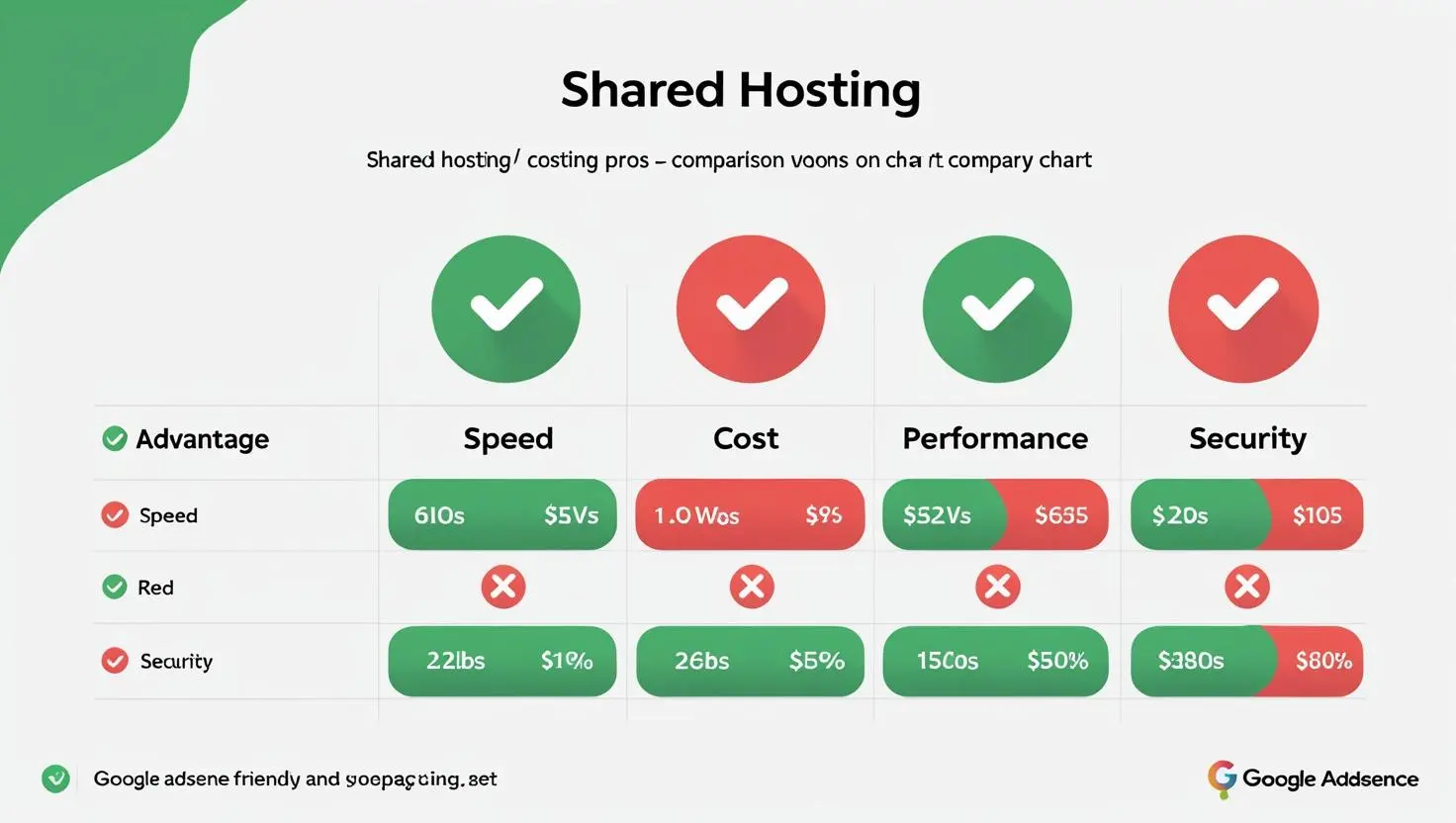💡 Shared Hosting: What It Is & Who Should Use It (Ultimate Guide)
If you're launching your first website, “Shared Hosting” is likely a term you’ve seen everywhere. But what does it really mean, how does it work, and is it right for you?
In this comprehensive guide, we’ll cover shared hosting’s advantages and disadvantages, who should use it, its SEO impact, and the best providers in 2025.
Also read: Types of Web Hosting Explained
✅ What Is Shared Hosting?
Shared hosting means multiple websites share the same server and its resources—like CPU, RAM, storage, and bandwidth.
Not sure about web hosting? Check our beginner-friendly guide to web hosting.
Think of it like an apartment building: your unit is your website, but utilities are shared.
🔍 How Shared Hosting Works
Hosting providers allocate server space for hundreds of websites on one physical server. Each user gets their own account but shares underlying resources with others.

⭐ Advantages of Shared Hosting
- 🤑 Affordable: Starting from $1–$5/month.
- 🎯 Beginner-Friendly: cPanel, one-click installs (What is cPanel?)
- 🔧 Maintenance-Free: Provider handles the server.
- 📦 Bundled Features: Free SSL, email, backups.
- 📞 Support: 24/7 help available.
⚠️ Disadvantages of Shared Hosting
- 🐢 Slower Performance: Sharing resources may slow your site.
- 📉 Limited Resources: Not suitable for high traffic.
- 🔐 Security Risks: Vulnerabilities from other sites.
- ⚙️ Less Control: No root access.

🔎 Who Should Use Shared Hosting?
- ✅ Beginners
- ✅ Small businesses
- ✅ Bloggers
- ✅ Students & hobbyists
- ✅ Startups
📈 Shared Hosting and SEO
✅ Pros: Good uptime, HTTPS, speed – all SEO-friendly
❌ Cons: Slow speed, downtime, or shared IP issues
Tip: Pick a trusted, reviewed hosting provider.
🏆 Best Shared Hosting Providers (2025)

| Hosting Provider | Starting Price | Features | Best For |
|---|---|---|---|
| Hostinger | $2.49/mo | LiteSpeed, free domain/email | Performance |
| Bluehost | $2.95/mo | Free SSL, WP optimized | WordPress sites |
| Namecheap | $1.98/mo | Free migration, easy UI | Budget-friendly |
| SiteGround | $3.99/mo | Fast support, backups | Reliability |
Detailed comparison: Shared vs VPS vs Cloud Hosting.
📚 Tips to Optimize Shared Hosting
- Use a lightweight theme
- Install caching plugins
- Use a CDN like Cloudflare
- Optimize images (WebP/compressed)
- Avoid plugin overload
🧠 Final Thoughts
Shared hosting is ideal for beginners and small projects. Easy, affordable, and packed with features like SSL and support. Upgrade as your site grows.
New to hosting? Learn how domains and hosting work together.
👉 Need help choosing the best shared hosting? Check our Hosting Comparison section for expert reviews.
❓ Frequently Asked Questions
Yes, when using reputable hosts with SSL and malware protection.
Yes, small stores run well. High traffic may require VPS or Cloud.
Depends on the plan—some allow 1 domain, others unlimited.
Performance may drop or account may be suspended. Upgrade if needed.
Yes, most providers offer easy migration paths.